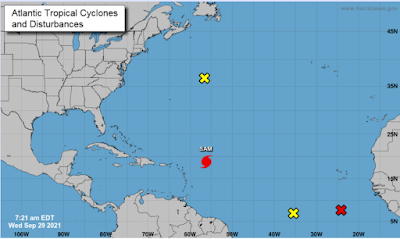Written by the TreasureGuide for the Exclusive use of the Treasure Beaches Report.
 |
| Ripped Treasure Coast Beach Last Winter. Photo by Alberto S. |
Thanks Alberto.
---
I received an great email from Kevin K. and thought I'd post it. I have a couple of reasons for doing that. I hope some of you will provide your comments in response to the questions, and I wanted to post some of my responses too.
Hello Treasure Guide-
I read today's article about metal detectors not having changed much, and I agree. And I have some questions about metal detector design.
1) The circular coils give a cone-shaped signal that from your sketches appears to have about a 45-60 degree angle from vertical. Does anyone know why it would not be cylindrical, but with a weakening signal as it goes deeper?
2) The D shaped coils apparently give a more rectangular planform, so why not make square coils to get the broadest signal planform?. Maybe this has been done on home made units, but no manufacturers appear to make these except for the older magnetometers with the horizontal tubes and a coil at 90 degree opposed angles at each end.
3) Since most metal detectors run on about the same battery voltage (I think), aren't they all pretty much limited to the same signal strength and depth? Wouldn't a higher voltage, say a 24V setup give deeper penetration? It seems like having to wait for the renourishment sand to erode is a waste of time if you can detect pretty deep.
4) I have noticed that my ground penetrating radar machine (which can go 10' deep) reflects off of buried metal in a bright, distinct signal as opposed to rocks, roots, etc. which are somewhat transparent to radar unlike metal. It seems to me these would make metal detectors obsolete for metal detection, especially on objects deeper than the approximate 12" maximum depth a metal detector can go, at least in relatively dry soil that allows good radar penetration (which Florida beaches do).
Best Regards, Kevin Kerwin
Who doesn't want to detect deeper? Who doesn't want the most deep seeking metal detector they can afford? What is not very often considered is what happens after you detect a very deep item. You still have to recover it. I know that doesn't sound like a big problem, but it is something that needs to be considered.
Just yesterday I mentioned that I went to the beach thinking about getting a target that I was not able to retrieve on Sunday.. Targets are not always easy to retrieve, and there are a variety of reasons for that. The particular target I left behind Sunday was stuck in some rocks and was in the swash zone where the water was crashing. I couldn't get it out at the time and hoped to catch it during a lower tide. The scoop was useless in that situation, so I took a hammer to break the rock. I'm not sure if the item was down in a crevice or actually embedded in the rock. Sunday, with the crashing water and rising tide I couldn't tell, and Tuesday I didn't find the target again.
It isn't always easy to retrieve a target. Imagine that you detected a signal that was three feet deep. So you detected an object, but it isn't easy to dig a three foot hole in beach sand. That is especially true in 90 degree Florida weather. And if you are willing to dig the three foot or deeper hole, which will continue to refill in dry sand, not to mention how difficult it would be if the hole is near the water. But let's say yor are able and willing to dig through three feet of sand to get the object. How much time will it take you? And are you willing to spend that type of time on a single hole, especially if you are not sure how good the object is?
I've written about this before, but it was along time ago. Everybody wants to detect deeper, but detecting deep is only part of the problem. The other part is retrieving those deep targets once they are detected. Not only can it be difficult, but you also have to consider how much time you want to put into it. Perhaps the auger system described by Robert J provides a solution for deeper targets, which also must be pinpointed fairly well. And in some situations you will have to deal with targets that are too large, as well as rocks and other types of obstructions.
As you know, the governmental authorities seem to have problems with digging deep holes in parks and on the beaches and might put in new rules or laws to stop it if it became common.
To summarize, detecting deep targets is only the first part of the problem. Retrieving deep targets might not be as easy as you think, and in some cases might not even be the best decision strategically.
---
Here is a good long article on the cronavirus. It hits a lot of issues and provides a lot of easy to understand information.
---
 |
| Source: nhc.noaa.gov |
Despite the amount of activity in the Atlantic, no much is supposed to come our way. Everything that you see there is going to stay pretty far out in the Atlantic.
 |
| Source: MagicSeaWeed.com. |
The surf predictions don't show anything big either.
Happy hunting,
TreasureGuide@comcast.net